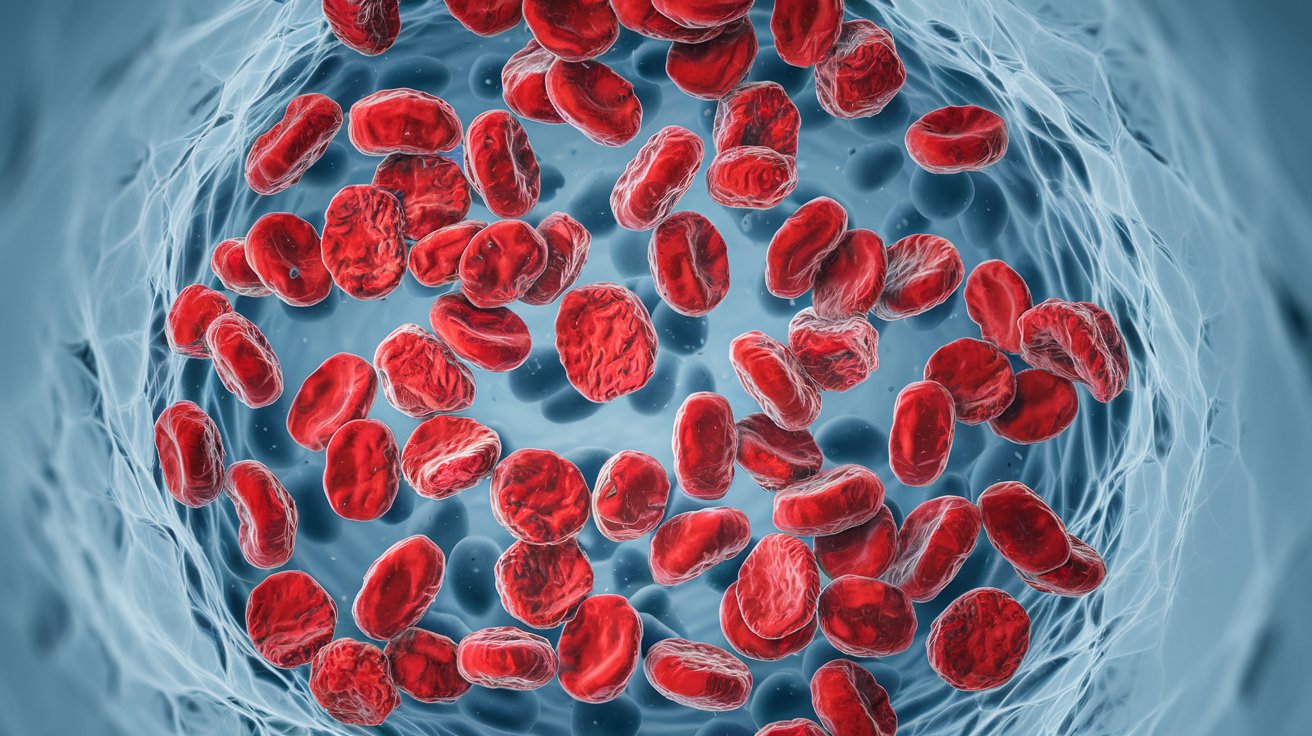
Cryoglobulinemia is a rare condition where abnormal proteins in the blood thicken in cold temperatures, causing various health issues. What causes cryoglobulinemia? Infections, autoimmune diseases, and certain cancers are the primary culprits. These proteins, known as cryoglobulins, can lead to symptoms like joint pain, skin rashes, and nerve damage. Diagnosing cryoglobulinemia involves blood tests that detect these proteins. Treatment often focuses on addressing the underlying cause, whether it's an infection or an autoimmune disorder. Understanding this condition is crucial for managing symptoms and improving quality of life. Let's dive into 25 intriguing facts about cryoglobulinemia to shed light on this complex medical issue.
Key Takeaways:
- Cryoglobulinemia is a rare condition where proteins in the blood turn solid at low temperatures, causing symptoms like joint pain and skin rashes. It can be triggered by infections, autoimmune diseases, or genetic factors.
- Diagnosis involves blood tests, biopsies, and imaging to confirm the condition and its underlying causes. Treatment options include antiviral therapy, immunosuppressive drugs, and pain management, while living with cryoglobulinemia requires regular monitoring and support.
What is Cryoglobulinemia?
Cryoglobulinemia is a rare medical condition where abnormal proteins in the blood, called cryoglobulins, become solid or gel-like at low temperatures. This can lead to various health issues.
- Cryoglobulins are proteins that precipitate at temperatures below normal body temperature and dissolve again upon warming.
- Three types of cryoglobulinemia exist: Type I, Type II, and Type III, each with different causes and characteristics.
- Type I is usually associated with blood cancers like multiple myeloma or Waldenström's macroglobulinemia.
- Type II and III are often linked to chronic infections, autoimmune diseases, or hepatitis C.
- Symptoms can include fatigue, joint pain, skin rashes, and nerve damage.
- Raynaud's phenomenon is common, where fingers and toes turn white or blue in cold temperatures.
- Vasculitis, inflammation of blood vessels, can occur, leading to organ damage.
- Kidney problems are frequent, potentially causing glomerulonephritis, which affects the kidney's filtering units.
- Skin ulcers and purpura (purple spots) can develop due to blood vessel inflammation.
Causes and Risk Factors
Understanding what triggers cryoglobulinemia helps in managing and preventing it.
- Hepatitis C is a major cause, especially for Type II and III cryoglobulinemia.
- Autoimmune diseases like lupus or rheumatoid arthritis increase the risk.
- Infections such as HIV or bacterial infections can trigger the condition.
- Genetic factors may play a role, though they are not well understood.
- Environmental factors like cold exposure can exacerbate symptoms.
Diagnosis and Testing
Proper diagnosis is crucial for effective treatment.
- Blood tests are used to detect cryoglobulins and measure their levels.
- Biopsies of affected organs, like the skin or kidneys, can confirm vasculitis.
- Imaging tests such as ultrasounds or MRIs help assess organ damage.
- Serological tests check for underlying infections or autoimmune diseases.
Treatment Options
Managing cryoglobulinemia involves addressing the underlying cause and symptoms.
- Antiviral therapy is effective for hepatitis C-related cryoglobulinemia.
- Immunosuppressive drugs like corticosteroids or rituximab help reduce inflammation.
- Plasmapheresis is a procedure that filters cryoglobulins from the blood.
- Pain management includes medications and lifestyle changes to reduce discomfort.
- Avoiding cold exposure helps prevent symptom flare-ups.
Living with Cryoglobulinemia
Daily life can be challenging, but there are ways to cope.
- Regular monitoring by healthcare providers is essential to manage the condition.
- Support groups and counseling can provide emotional and practical support.
Final Thoughts on Cryoglobulinemia
Cryoglobulinemia, a rare blood disorder, involves abnormal proteins that thicken in cold temperatures. These proteins can cause various symptoms, from skin rashes to kidney issues. Understanding the condition helps in managing it better. Treatments range from medications to lifestyle changes, aiming to reduce symptoms and improve quality of life.
Staying informed about cryoglobulinemia is crucial. Regular check-ups and following medical advice play significant roles in managing the disorder. Support from healthcare professionals and loved ones can make a big difference.
Remember, while cryoglobulinemia might seem daunting, many people lead fulfilling lives with proper care. Knowledge and proactive management are key. If you or someone you know is affected, don’t hesitate to seek medical guidance. Stay positive and take one step at a time.
Frequently Asked Questions
Was this page helpful?
Our commitment to delivering trustworthy and engaging content is at the heart of what we do. Each fact on our site is contributed by real users like you, bringing a wealth of diverse insights and information. To ensure the highest standards of accuracy and reliability, our dedicated editors meticulously review each submission. This process guarantees that the facts we share are not only fascinating but also credible. Trust in our commitment to quality and authenticity as you explore and learn with us.
